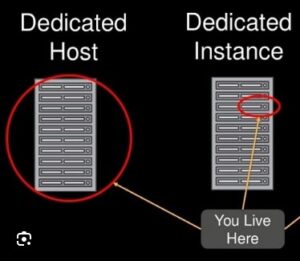AWS_Interview questions
Posted on by hrithik kharvi1)Difference between Dedicated Host and Dedicated Instances
A dedicated host gives you your private physical server, while dedicated instances reserve a secure space for your virtual computers within a shared server.

2) Range of Private IP
i)Class A (10.0.0.0 to 10.255.255.255): This allows for approximately 16.8 million unique host addresses. The entire 10.0.0.0/8 range is reserved for private use.
ii)Class B (172.16.0.0 to 172.31.255.255): This allows for approximately 1,024 unique networks, each with around 65,534 unique host addresses. The 172.16.0.0/12 range is reserved for private use.
iii) Class C (192.168.0.0 to 192.168.255.255): This allows for 65,536 unique networks, each with approximately 254 unique host addresses. The 192.168.0.0/16 range is reserved for private use.
3) Differences Between IPV4 and IPV6
IPv4 (Internet Protocol version 4):
Number Size: Like having a limited set of phone numbers with 10 digits.
AWS Usage: AWS extensively uses IPv4 addresses. Many of their services are primarily designed around IPv4.
Common Notation: EC2 instances and other resources are typically assigned IPv4 addresses (e.g., 172.31.16.172).
Long-Term Transition: IPv4 is widely supported and used, but its addresses are running out, so there’s a transition to IPv6.
IPv6 (Internet Protocol version 6):
Number Size: Like having an incredibly huge set of serial numbers with lots of digits and letters.
AWS Usage: AWS supports IPv6, and it’s encouraged for resources that interact with the public internet.
Common Notation: IPv6 addresses in AWS are much longer and use hexadecimal notation (e.g., 2001:0db8:85a3:0000:0000:8a2e:0370:7334).
Future-Ready: IPv6 provides a practically infinite number of addresses, ensuring that AWS can accommodate the growing number of internet-connected devices.
Dual-Stack: AWS often supports both IPv4 and IPv6, allowing resources to communicate over both protocols.




Leave a Reply